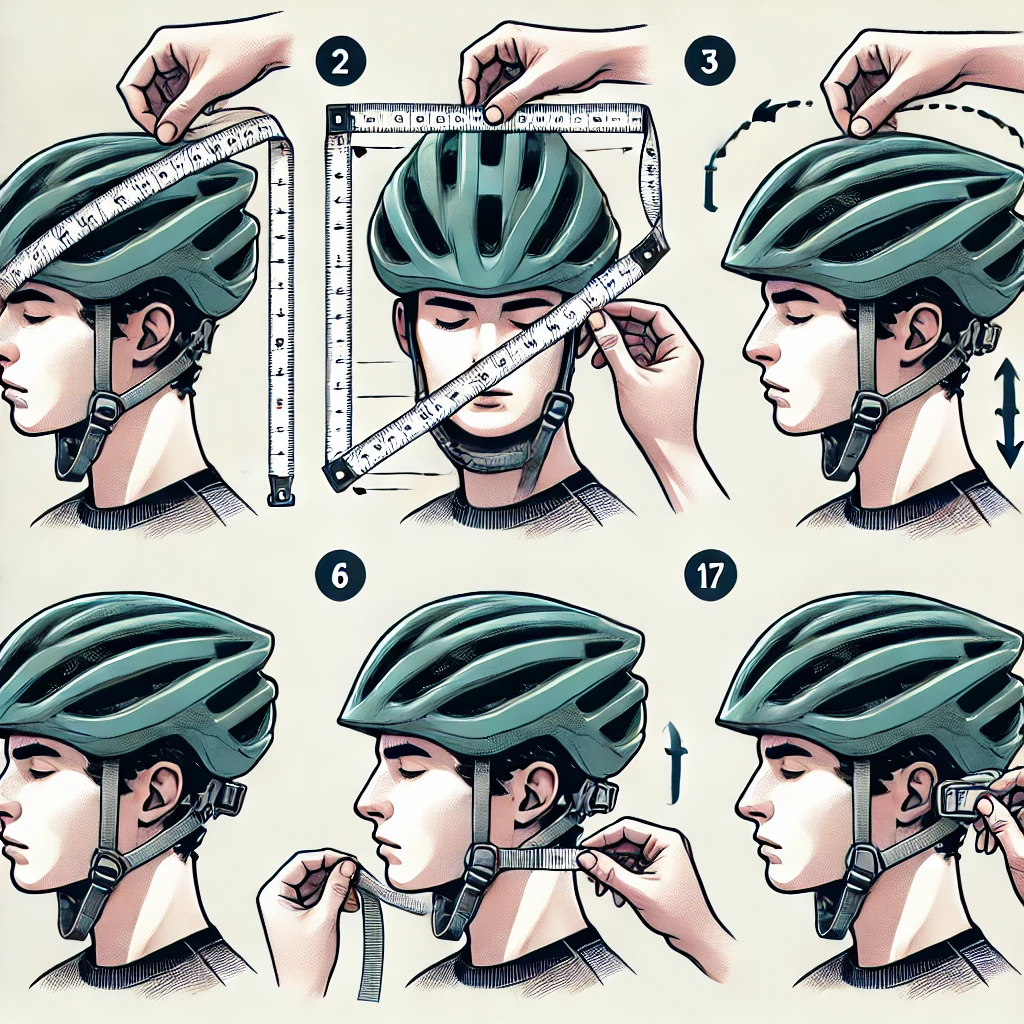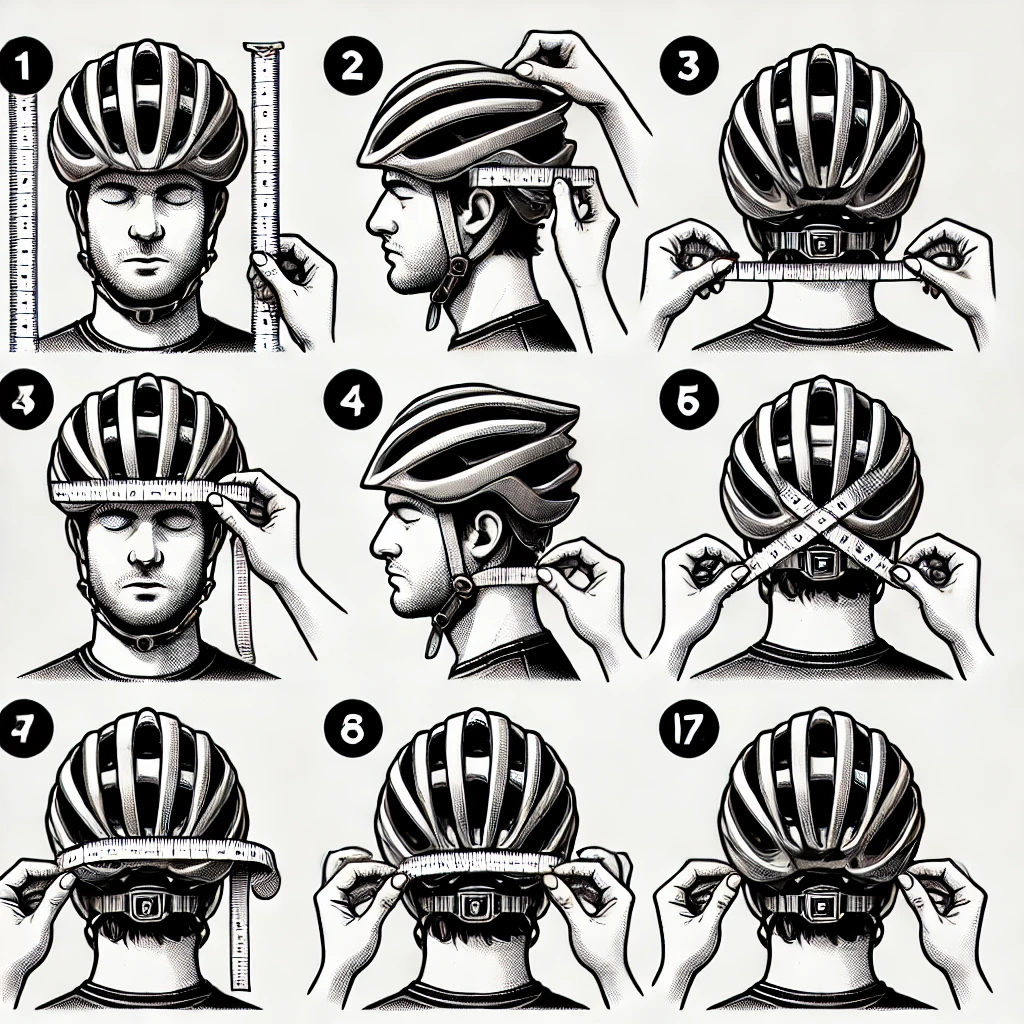How Bike Helmet Should Fit
Wearing a properly fitted bike helmet is essential for safety. A helmet that fits well can significantly reduce the risk of head injuries in case of an accident. This guide will walk you through the steps to ensure your bike helmet fits correctly, providing maximum protection and comfort.

Introduction to Helmet Fit
A bike helmet should fit snugly on your head, sitting level and low on your forehead. It shouldn’t move around easily, but it also shouldn’t be uncomfortably tight. Achieving the perfect fit involves adjusting various components of the helmet, including the straps, padding, and retention system.
Measuring Your Head
Before purchasing a bike helmet, you need to know your head circumference. Use a flexible tape measure to wrap around your head, about one inch above your eyebrows, ensuring the tape is level all the way around. Most helmet sizes are based on head circumference, so this measurement will help you select the right size.
Choosing the Right Helmet Size
Helmets come in different sizes, typically small, medium, and large, often accompanied by specific measurements in centimeters. Choose a helmet size that matches your head circumference. If you’re between sizes, opt for the smaller size for a snug fit, as most helmets come with adjustable padding and retention systems to fine-tune the fit.
Positioning the Helmet
When you place the helmet on your head, it should sit level and cover most of your forehead, about one to two finger-widths above your eyebrows. The back of the helmet should cover the base of your skull without tilting backward or forward. A level helmet provides better protection and visibility.
Adjusting the Internal Padding
Most helmets come with internal padding that can be adjusted or replaced to enhance fit and comfort. Ensure the padding sits snugly against your head without creating pressure points. Some helmets offer additional padding sets of varying thicknesses to customize the fit further.
Tightening the Retention System
Modern bike helmets feature a retention system, usually a dial or adjustable band at the back, to secure the helmet on your head. Adjust this system until the helmet feels snug but not overly tight. The helmet should remain in place when you shake your head, but it shouldn’t cause discomfort.
Adjusting the Straps
Proper strap adjustment is crucial for helmet stability and safety. The side straps should form a V shape under and slightly in front of your ears. Adjust the straps so they sit flat against your head and don’t twist. The buckle should be centered under your chin.
Securing the Chin Strap
Buckle the chin strap and adjust it until it fits snugly under your chin. You should be able to fit one or two fingers between the strap and your chin comfortably. A properly adjusted chin strap ensures the helmet stays in place during a crash or sudden movement.
Performing the Shake Test
To ensure your helmet is properly fitted, perform the shake test. With the helmet on and the straps secured, shake your head side to side and up and down. The helmet should remain securely in place without shifting. If it moves significantly, readjust the straps and retention system.
Final Adjustments and Comfort Check
Once you’ve adjusted all components, check for comfort. The helmet should feel snug all around without any pressure points. Wear the helmet for a few minutes to ensure it remains comfortable during extended use. A well-fitted helmet shouldn’t cause headaches or discomfort.

Common Fit Problems and Solutions
- Helmet sits too high: Adjust the retention system and padding to lower the helmet.
- Straps are too loose: Tighten the side straps and chin strap for a secure fit.
- Helmet tilts forward or backward: Ensure the helmet is level and adjust the retention system.
Conclusion
A properly fitted bike helmet is crucial for ensuring safety and comfort while riding. By following these steps, you can achieve a perfect fit that maximizes protection and enhances your riding experience. Remember to periodically check your helmet fit, especially after adjusting your hairstyle or adding accessories like a hat or bandana underneath. Safety should always be a priority, and a well-fitted helmet is a key component in protecting yourself on the road.














